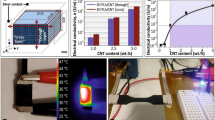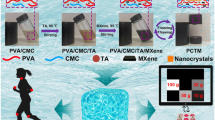Abstract
It is demonstrated that extended-length sensors can be fabricated by the direct immobilization of suitable reagents into the original cladding of a plastic-clad silica (PCS) optical fiber. This cladding, a copolymer of vinyl-terminated poly(dimethylsiloxane) and poly(dimethylmethylhydrosiloxane), is an attractive immobilization matrix for a wide variety of reagents and opens up new avenues of sensor design. Unlike fibers with custom-drawn cladding, the new approach offers greater photo- and thermal stability and permits immobilization of several reagents in adjacent sections of a single fiber. Further, compared to room-termperature vulcanizable (RTV) silicone films used often in optical point sensors, the silicone cladding of a PCS optical fiber offers a number of advantages, including a dynamic fluorescence quenching constant for an immobilized fluorophore that is up to 3.4 times higher, tolerance to aggressive environments (e.g. highly alkaline solutions), lower rates of indicator leaching, high uniformity, and applicability to extended-length sensing. The homogeneity of the microenvironment of the fiber cladding, its resistance to aggressive alkaline solutions, and its ability to transport water vapor were probed by introducing a variety of reagents into the cladding, including a fluorescent ruthenium complex and acid-base and solvatochromic indicators. The new sensor-fabrication approach should find wide application, including detection of neutral species in gases and dissolved in water, and for spatial analyte mapping over extended, remote areas.
Similar content being viewed by others
Author information
Authors and Affiliations
Additional information
Received: 16 October 1998 / Revised: 23 November 1998 / Accepted: 28 November 1998
Rights and permissions
About this article
Cite this article
Potyrailo, R., Hieftje, G. Use of the original silicone cladding of an optical fiber as a reagent-immobilization medium for intrinsic chemical sensors. Fresenius J Anal Chem 364, 32–40 (1999). https://doi.org/10.1007/s002160051297
Issue Date:
DOI: https://doi.org/10.1007/s002160051297




